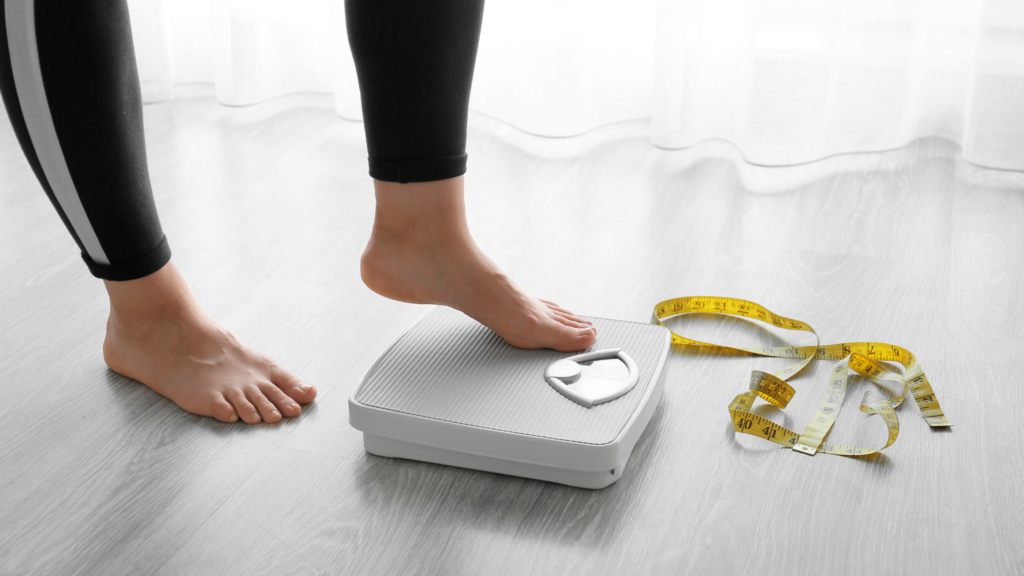Vitamin D Deficiency, A Silent Epidemic
Published on November 19, 2015 by Dr. Caitlin Gordon
 In 2006, 30% of people were very deficient in Vitamin D. Based on the new standards for adequate D levels that number may be as high as 70%. If you’re local to Colorado, you might read this heading and think, “This doesn’t apply to me… Colorado is so sunny, why would I have to worry about Vitamin D deficiency?”. There are several reasons why it’s very difficult to synthesize enough Vitamin D from the sun, even in sunny Colorado. I will explain more below…
In 2006, 30% of people were very deficient in Vitamin D. Based on the new standards for adequate D levels that number may be as high as 70%. If you’re local to Colorado, you might read this heading and think, “This doesn’t apply to me… Colorado is so sunny, why would I have to worry about Vitamin D deficiency?”. There are several reasons why it’s very difficult to synthesize enough Vitamin D from the sun, even in sunny Colorado. I will explain more below…
What does Vitamin D Do?
Vitamin D is a bit of misnomer–it’s actually a fat-soluble hormone. As we all know, hormones can have a dramatic effect on health. Vitamin D research is advancing seemingly by the day. More studies have come out showing Vitamin D is a primary player in everything from cancer to IBS to depression. Nearly every chronic condition can be linked to low vitamin D levels. This is not to say that Vitamin D deficiency causes these problems (though it might), but because of the protective effect high D levels have on our hearts, immune system, bones, gut lining, and neurotransmitters, it is a very important “vitamin” to care about.
Kids Need Vitamin D too!
A study of over 3,000 children showed low D levels in childhood was linked to higher food sensitivities and allergies.
Another study of 2,600 children showed that vitamin D deficiency was more prevalent in children with ADHD when compared to the control group.
Get Tested
There are several good options for getting tested.
- Your regular doctor can order a Vit D test when you go in for your yearly physical or preventative wellness exam. Ask for it!
- If you don’t want to make an appointment to see your doctor, you can order the test through Amaluna for 50$ or yourself at directlabs.com.
 The test you want is a serum Vitamin D level as well as a calcitriol test. Most doctors don’t routinely test calcitriol, also called 1,25Vitamin D but this is the active metabolite of Vitamin D. Ask your doctor for both, insurance will cover it. For individuals with chronically low Vitamin D it’s very important to test calcitriol levels, as sometimes the low D is a sign of a lingering infection, which causes the body to be constantly converting Vitamin D into calcitriol. In this case, calcitriol levels would come back high. The greater disparity between Vitamin D and calcitriol the more likely there is an underlying inflammatory process.
The test you want is a serum Vitamin D level as well as a calcitriol test. Most doctors don’t routinely test calcitriol, also called 1,25Vitamin D but this is the active metabolite of Vitamin D. Ask your doctor for both, insurance will cover it. For individuals with chronically low Vitamin D it’s very important to test calcitriol levels, as sometimes the low D is a sign of a lingering infection, which causes the body to be constantly converting Vitamin D into calcitriol. In this case, calcitriol levels would come back high. The greater disparity between Vitamin D and calcitriol the more likely there is an underlying inflammatory process.
Symptoms of Vitamin D Deficiency
Most people with low Vitamin D will not have symptoms. However, the following can indicate a Vitamin D deficiency:
- Pain on brushing or pulling the hair
- Bone pain
- Head sweating
- Aching teeth
- Frequent colds, flus, or infections
- Depression
- Muscle weakness
- Soreness upon pressing the sternum
How much is enough?
Conventional medicine will tell you so long as you’re over 20ng/ml you’re in the normal range. However, mounting evidence indicates you should shoot for a blood level of 40-70ng/ml for optimal immune function. Vitamin D deficiency is incredibly common, especially in Colorado.
Several factors affect our ability to produce Vitamin D from the sun. The main ones:
- Amount of skin exposed
- The more skin showing, the more D you make.
- Location
- The farther from the equator the less D we can make from the sun. In Colorado, it is estimated that we can only make adequate Vitamin D from the sun between April and October.
- Air pollution reduces your ability to make D from the sun
- You cannot make Vitamin D from the sun through glass
- Bathing
- There is at least one study* that shows sebum or oil on the skin contains a necessary compound for synthesizing Vitamin D and that when we bathe after sun exposure we limit our skin’s ability to produce adequate Vitamin D. *Helmer AC, Jensen CH: Vitamin D precursors removed from the skin by washing. Studies Inst Divi Thomae 1937, 1:207-216.)
- Skin color
- The more melanin (skin pigment) you have, the less Vitamin D your body will make from the sun. This can be seen in individuals of African American or Indian descent, who are more likely to experience Vitamin D deficiency.
- Sunglasses/Sunscreen
- Sunglasses interfere with Vitamin D production. Your eyes tell your brain that you are in the sun. If your eyes don’t know you’re in the sun because you have sunglasses on, you interfere with the signaling that tells your skin to start making Vitamin D.
- Sunscreen prevents your skin from synthesizing Vitamin D from the sun. There are some scientists who believe putting any kind of lotion, oil, or sunscreen on your skin within two hours of sun exposure will interfere with the body’s ability to make Vitamin D.
- Time of Year/Day
- As explained by the Vitamin D council, “When the sun’s rays enter the Earth’s atmosphere at too much of an angle, the atmosphere blocks the UVB part of the rays, so your skin can’t produce vitamin D. This happens during the early and later parts of the day and during most of the day during the winter season.”
- Cholesterol
- Cholesterol is necessary to synthesize Vitamin D from sunlight and to use the Vitamin D from food. If your cholesterol is too low, you are at risk for Vitamin D deficiency. You are also at much greater risk of developing Alzheimer’s, Parkinson’s, and suffering from cognitive decline. Cholesterol is an essential protective component of the brain.
- Age
- The older we are, the less Vitamin D we can make, and the more important supplementation becomes.
How To Increase your Vitamin D Level
- Sunshine
- You can and should make as much D from the sun as possible. Spending time in the sun has a lot of benefits, even though the American Cancer Society and other big organizations for skin cancer have villainized sun exposure. In order to make enough D from the sun use this basic formula:
- If your Vitamin D is in the normal range (40-50): with your arms and legs exposed, without sunscreen or sunglasses, you need one MED every 2.5 days. What the heck is a MED? It stands for Minimal Erythemal Dose and it means the time it takes to notice several hours later or the next day that your skin looks very slightly pink or a slight line has appeared between your sun-exposed skin and your covered skin. This is individual to every person. It might take one person 10 minutes to reach this point, and another person 30 minutes.
- If your Vitamin D is low (below 40): with your arms/legs exposed you need 1 MED 7 days per week during 11-2pm hours in summer months.
- If you’re in a bathing suit, the maintenance level would be 1 MED per week, and Vitamin D deficiency treatment would be 1 MED 3x per week from 11-2pm hours in summer months.
- Do not shower for 2 hours after sun exposure
- Do not use sunscreen or sunglasses until your MED point
- You can and should make as much D from the sun as possible. Spending time in the sun has a lot of benefits, even though the American Cancer Society and other big organizations for skin cancer have villainized sun exposure. In order to make enough D from the sun use this basic formula:
- Supplementation
- Depending on how low your levels are you will want to take anywhere from 2,000IU up to 10,000IU daily. You should work with a functional medicine practitioner to determine the right level for you. For individualized advice, schedule an appointment. You want a D3 (not d2) supplement, as this is the most bioavailable form.
 Diet
Diet
- Coldwater fish like Wild Alaskan sockeye salmon, sardines, tuna, and anchovies contain very high levels of Vitamin D. Be cautious with tuna due to mercury levels. Wild Planet is a good low-mercury brand.
- Cod liver oil
- Eggs
- Liver
- Swiss cheese
- As you may be noticing, there are very limited dietary sources of Vitamin D. It is important for individuals on a plant-based diet to get their levels tested and supplement accordingly, as they are even more likely to have Vitamin D deficiency.
*There are risks to having a Vitamin D level that is TOO high. You should get regular testing (every 6-12months) to monitor your levels.
Sources
Amazing podcast from Dr. Michael Ruscio on Vitamin D
Vitamin D Research from the National Institute of Health
Low Vitamin D levels Despite Abundant Sun Exposure
The contents of this site, including text, graphics, images, and other material are for informational purposes only. Nothing contained in this site is or should be considered or used as a substitute for professional medical or mental health advice, diagnosis, or treatment. Please schedule an appointment for personalized health advice.






